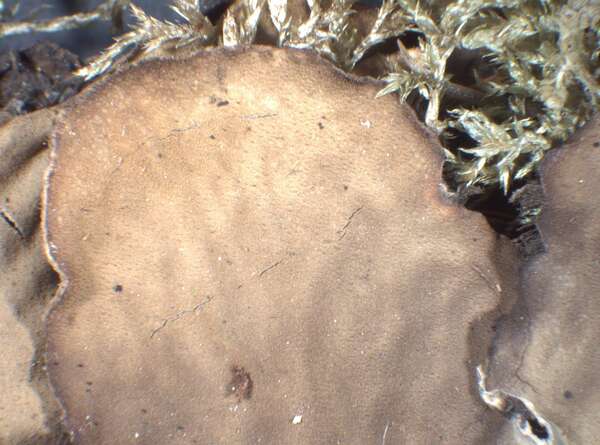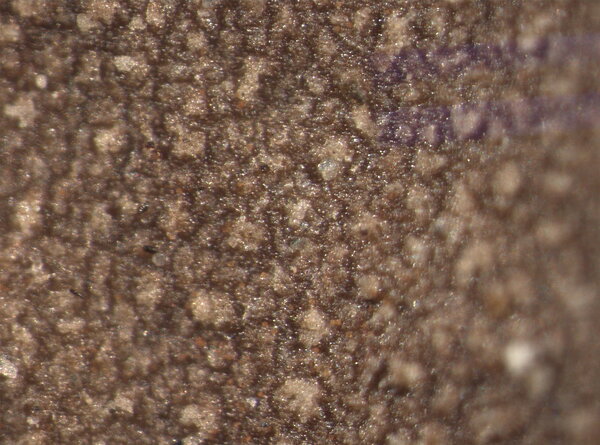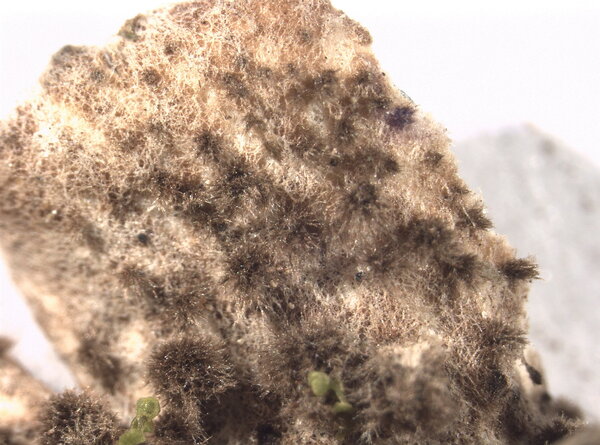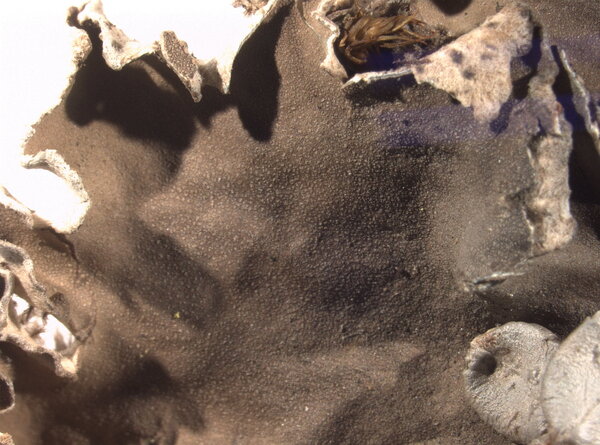Peltigera scabrosa Th. Fr.
N. Acta R. Soc. Sci. Upsal, ser. 3: 45, 1860.
Synonyms: Peltigera genuina f. minutella Gyeln.; Peltigera genuina Gyeln.; Peltigera pulverulenta auct. non (Taylor) Nyl.
Distribution: N - Lomb.
Description: Thallus foliose, heteromerous and dorsiventral, broad-lobed, grey, brown or grey-brown when dry, dark brown-green when wet, matt, 5-10(-20) cm across, loosely attached. Lobes elongate, contiguous, with rounded ends, 1-3(-4) cm wide, up to 10(-18) cm long, with a glabrous but clearly roughened, scabrous surface and more or less raised margins. Lower surface whitish at the periphery, dark in central parts, with 0.8-1.2 mm broad, ochraceous veins darkening towards centre, 1-2 mm wide, pale interstices, and 2-3(-5) mm long, dark, fibrillose to fasciculate rhizines which are often fused at tips, forming a more or less continuous mat. Upper cortex pseudoparenchymatous; medulla white; lower cortex absent. Apothecia rather rare, terminal on short ascending lobes, brown, convex, saddle-shaped, 3-6 mm across. Paraphyses simple, distinctly thickened above. Asci 8-spored, fissitunicate, the thickened apex with a K/I+ blue ring, Peltigera-type. Ascospores 3-5-septate, hyaline to pale brown at maturity, acicular, thin-walled, (52-)75-90(-95) x 3-5 μm. Photobiont cyanobacterial (Nostoc, the cells not in long chains). Spot tests: thallus and medulla K-, C-, KC-, P-, UV-, or medulla faintly C+, KC+ pink. Chemistry: two chemotypes, with different combinations of tenuiorin, methyl-gyrophorate, gyrophoric acid, and unidentified triterpenoids. Note: a circumpolar, mainly arctic-alpine lichen found on mossy soil and rocks near and above treeline. There is only an old record from Italy, which needs confirmation; however, this lichen is also known from a few non-Italian localities in the Alps, and from the Carpathians.
Growth form: Foliose, broad lobed
Substrata: soil, terricolous mosses, and plant debris
Photobiont: cyanobacteria, filamentous (e.g. Nostoc, Scytonema)
Reproductive strategy: mainly sexual
Commonnes-rarity: (info)
Alpine belt: extremely rare
Subalpine belt: extremely rare
Oromediterranean belt: absent
Montane belt: absent
Submediterranean belt: absent
Padanian area: absent
Humid submediterranean belt: absent
Humid mediterranean belt: absent
Dry mediterranean belt: absent
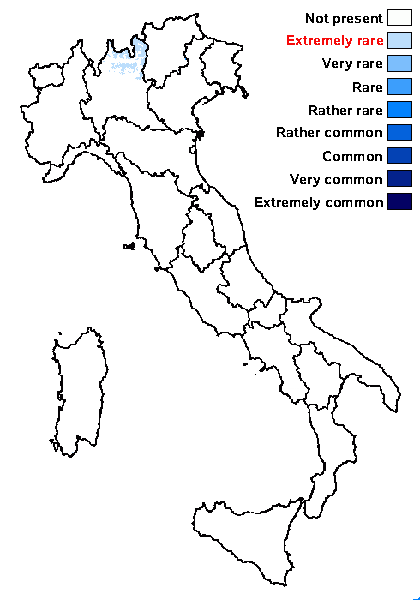
Predictive model


Curtis Randall Björk – CC BY-SA 4.0
British Columbia, Skeena Mountains Date: 2014-09-08 Terricolous in subalpine heath
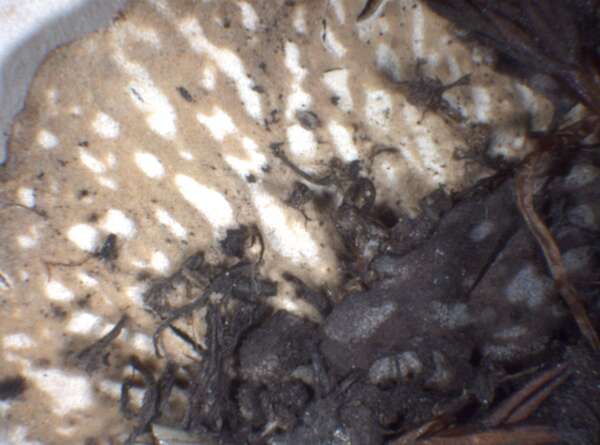

P.L. Nimis; Owner: Department of Life Sciences, University of Trieste
Herbarium: TSB (28627)
2003/03/03
detail of lower surface
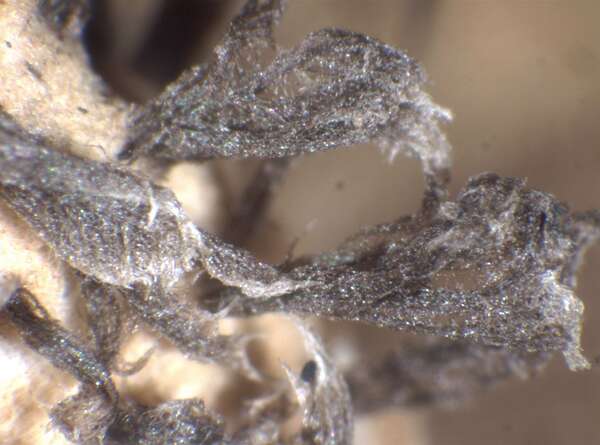

P.L. Nimis; Owner: Department of Life Sciences, University of Trieste
Herbarium: TSB (3145)
2003/03/03
rhizines


P.L. Nimis; Owner: Department of Life Sciences, University of Trieste
Herbarium: TSB (3145)
2003/03/03
detail of upper surface
Growth form: Foliose, broad lobed
Substrata: soil, terricolous mosses, and plant debris
Photobiont: cyanobacteria, filamentous (e.g. Nostoc, Scytonema)
Reproductive strategy: mainly sexual
Commonnes-rarity: (info)
Alpine belt: extremely rare
Subalpine belt: extremely rare
Oromediterranean belt: absent
Montane belt: absent
Submediterranean belt: absent
Padanian area: absent
Humid submediterranean belt: absent
Humid mediterranean belt: absent
Dry mediterranean belt: absent

Predictive model


Curtis Randall Björk – CC BY-SA 4.0
British Columbia, Skeena Mountains Date: 2014-09-08 Terricolous in subalpine heath


P.L. Nimis; Owner: Department of Life Sciences, University of Trieste
Herbarium: TSB (28627)
2003/03/03
detail of lower surface


P.L. Nimis; Owner: Department of Life Sciences, University of Trieste
Herbarium: TSB (3145)
2003/03/03
rhizines


 INDEX FUNGORUM
INDEX FUNGORUM
 GBIF
GBIF
